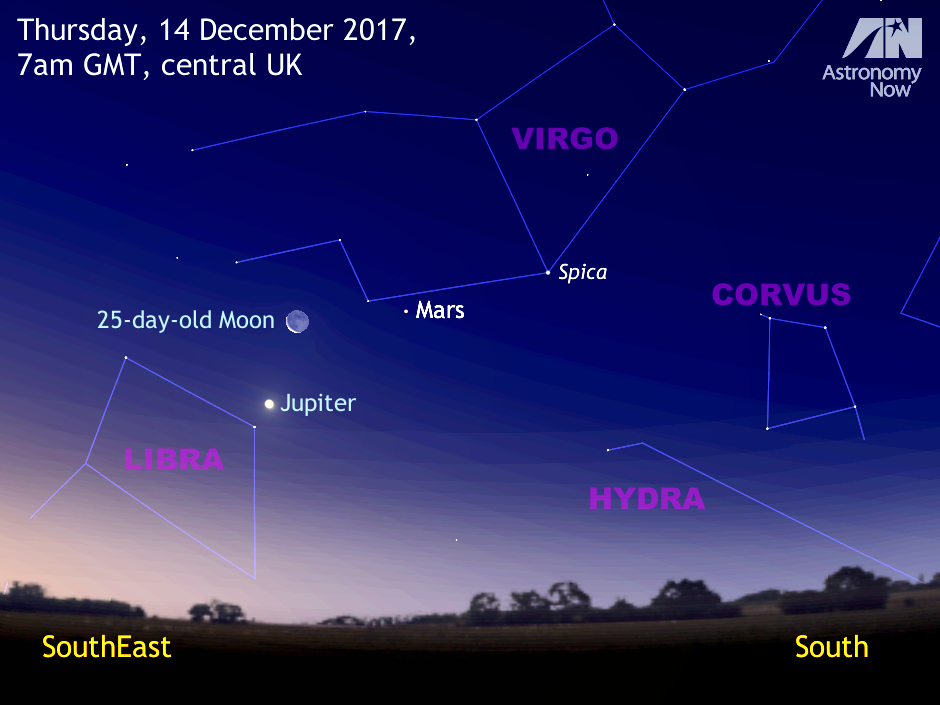
For UK early risers hopeful of enjoying a bumper crop of Geminid meteors or a glimpse of their parent body, asteroid 3200 Phaethon, there’s another treat in store at dawn on Thursday, 14 December: a conjunction of the 25-day-old waning crescent Moon with planets Jupiter and Mars.
For most observers in the British Isles, a good time to view this planetary gathering is close to 7am GMT, but if you are outside around 6am then you can see the trio in a dark sky. Magnitude -1.7 Jupiter lies about 5½ degrees to the lower left of the 14 percent illuminated Moon, so the pair will just fit the same field of view of most 7× or 8× binoculars.
Mars lies some 7 degrees to the right of the lunar crescent on 14 December, so you might just squeeze the pair into the field of view of wide-angle 7× binoculars. With the naked eye, don’t confuse magnitude +1.6 Mars with first-magnitude star Spica a span of a fist at arm’s length to the right of the Red Planet. However, Mars is noticeably fainter than Virgo’s brightest star.
Keep an eye on the changing configuration of Jupiter and Mars as 2017 draws to a close. Mars passes into the constellation of Libra on 21 December as it draws steadily closer to Jupiter. A real treat is in store on 7 January 2018 as the two planets lie less than a quarter of a degree (about half the diameter of the full Moon) apart in the southern sky at dawn.



